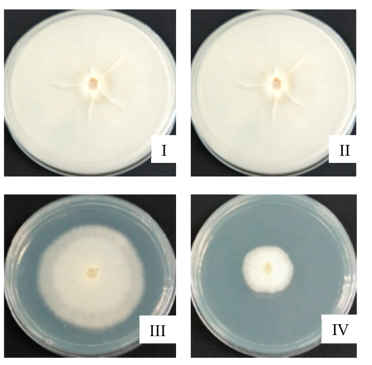Fungicide, namely hexaconazole was successfully intercalated into the intergalleries of zinc/aluminium-layered double hydroxide (ZALDH) using ion exchange method. Due to the intercalation of hexaconazole, the basal spacing of the ZALDH was expanded from 8.7 Å in ZALDH to 29.5 Å in hexaconazole-intercalated ZALDH (HZALDH). Fourier transform infrared (FTIR) study shows that the absorption band of the resulting nanocomposite is composed of both features of the hexaconazole and ZALDH which further confirmed the intercalation episode which subsequently enhanced the thermal stability of the hexaconazole. The fungicide loading was estimated to be 51.8 %. The nanodelivery system also shows better inhibition towards the Ganoderma boninense growth than the counterpart, free hexaconazole. The value of EC50 for hexaconazole, ZALDH and HZALDH was found to be 0.05, 2.03 and 0.03 ppm, respectively.
These findings indicate that the resulting nanodelivery system of hexaconazole developed in this work is more effective in combating G. boninense compared to its counterpart, the free hexaconazole as indicated by the lower EC50 value, 0.03 compared to 0.05 ppm, respectively. Another type of fungicide, dazomet also was intercalated into the ZALDH via the ion-exchanged method and labeled as dazomet-intercalated ZALDH (DZALDH). The dazomet loading was found to be 32 % and thus increased the basal spacing to 29.65 Å. All the other characterisation studies supported that dazomet was intercalated into the ZALDH nanolayers. Further studies on oil palm seedlings had revealed that both the HZALDH and DZALDH treatments show the positive effects on all the parameters tested. Most of the treatments have almost similar seedling height of 50 % of the control. The leaf width data for the DZALDH was 52.8 compared to 51.6 cm2 for the control. The dry weight achieved by the ZALDH, HZALDH and DZALDH were 2.05, 1.73 and 1.99 g, respectively which were significantly higher compared to the hexaconazole-based commercially available fungicide (HC) and the dazomet-based commercially available fungicide (DC), which are 0.57 and 0.69 g, respectively. The HC treatment achieved the lowest value in all the parameters showing that the growth of the seedlings under this treatment were significantly inhibited and suppressed.
The results obtained indicated that both hexaconazole-intercalated ZALDH (HZALDH) and dazomet-intercalated ZALDH (DZALDH) also promoting significant growth of oil palm seeds compared to their commercially available counterparts. Therefore, the development of HZALDH and DZALDH as fungicide nanodelivery systems has a great potential to be used as a new generation of safer and environmentally friendly agronanochemicals.

Figures show the inhibitation zone of Ganoderma boninense after 7 days at 0.05 ppm in control (I), ZALDH (II), pure hexaconazole (III) and HZALDH nanocomposite (IV)
*Abstract of the thesis (Master of Science) by Isshadiba Faikah binti Mustafa.
For further information please contact:
Professor Dr Mohd Zobir Hussein
Chairman
mzobir@upm.edu.my
Date of Input: 25/02/2022 | Updated: 25/02/2022 | roslina_ar
MEDIA SHARING























